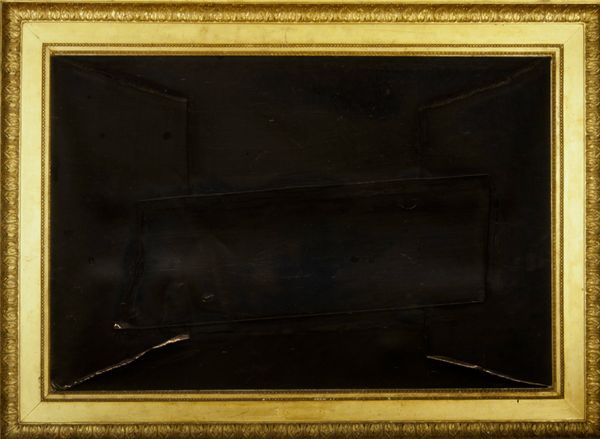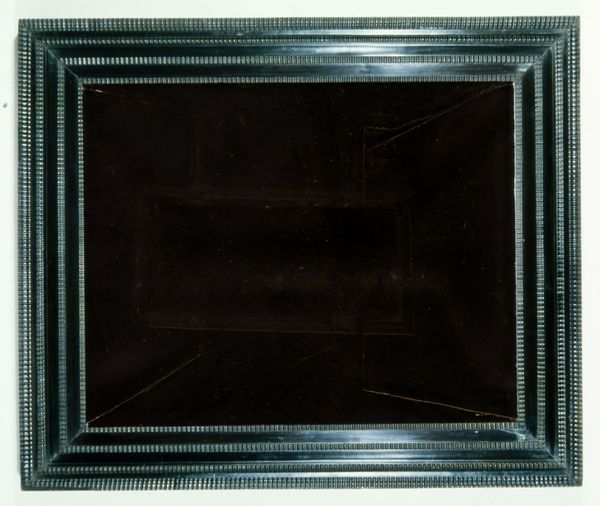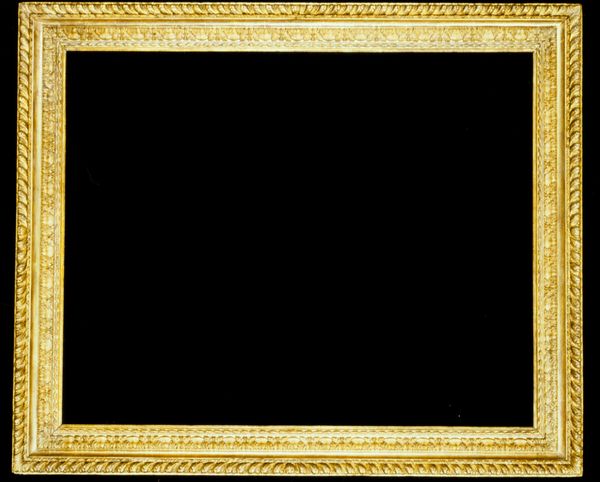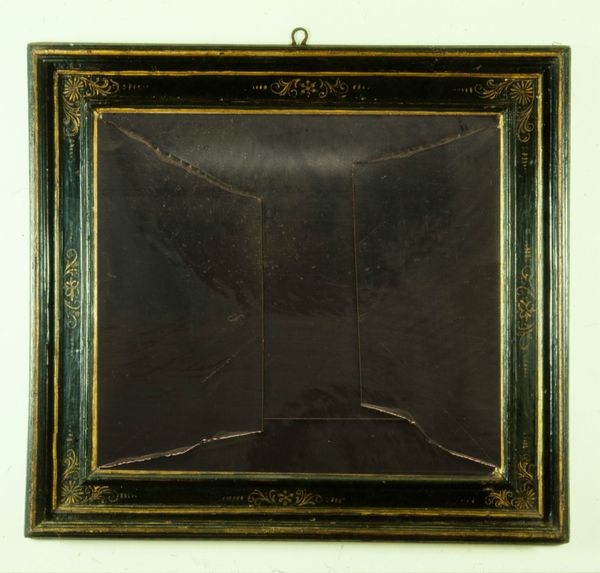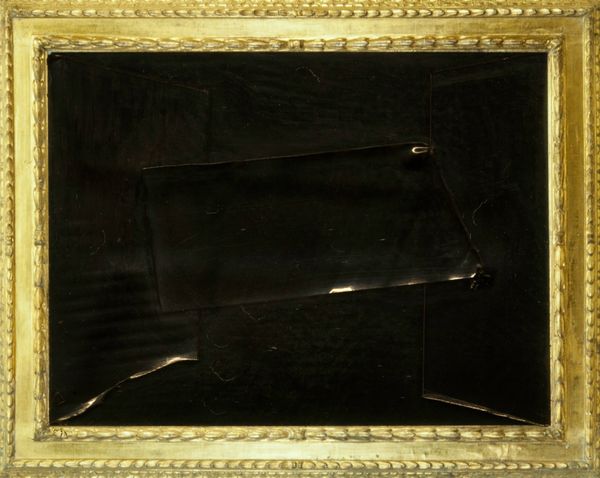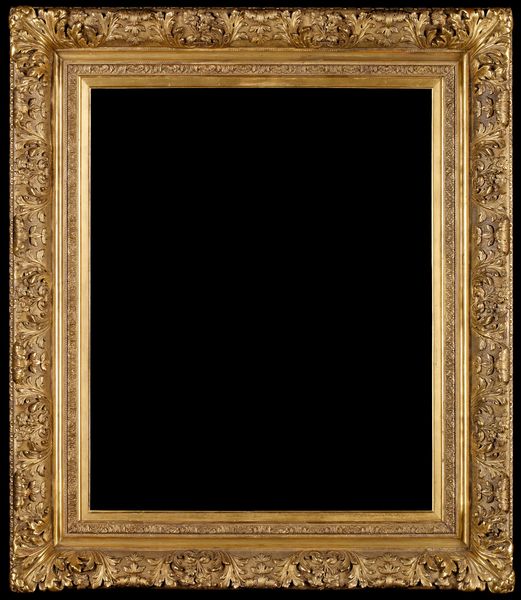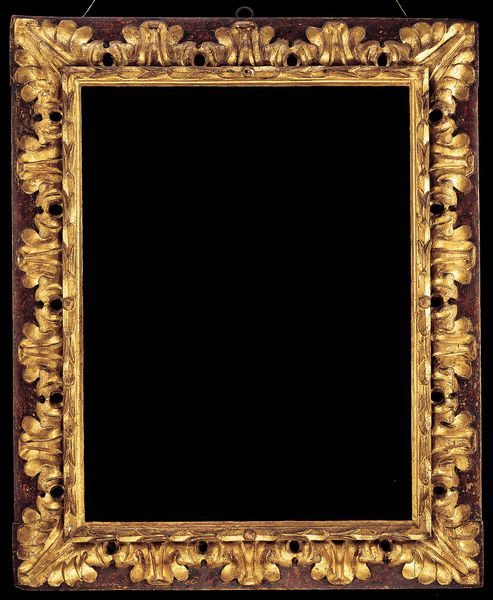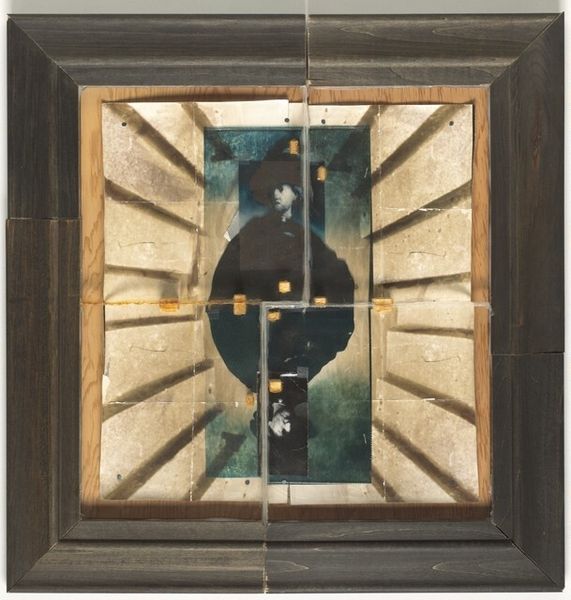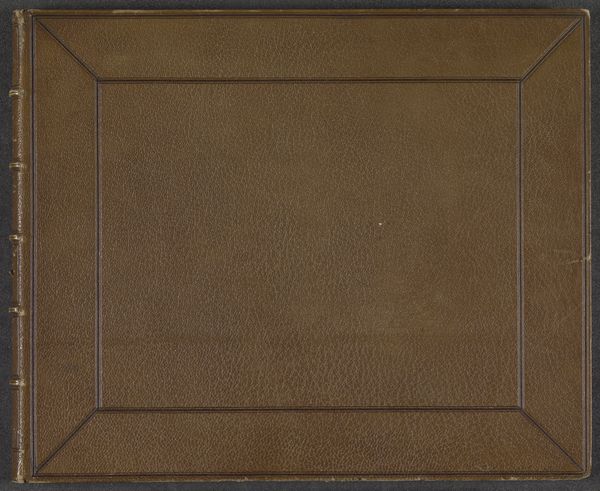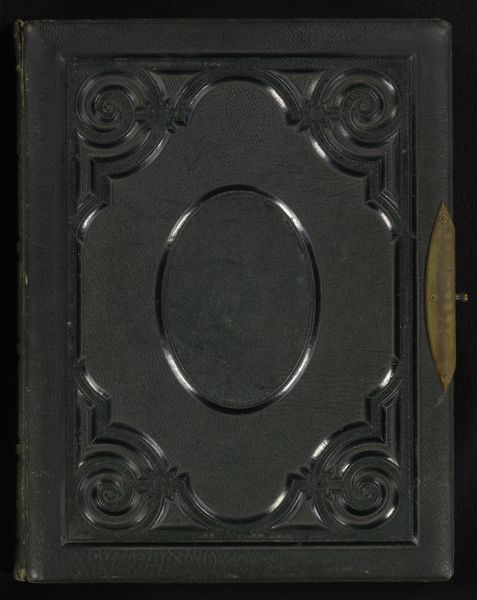
sculpture, wood
#
sculpture
#
sculpture
#
wood
#
decorative-art
Dimensions: 28 3/8 x 23 1/8 in. (72.07 x 58.74 cm) (sight)40 3/4 x 35 3/4 in. (103.51 x 90.81 cm) (outer frame)
Copyright: Public Domain
Curator: Looking at this artifact, which is entitled "Frame," created anonymously around the 16th century, one is immediately struck by its seemingly simple function: to house and highlight an artwork. Its wood construction and gilded surface speak to a particular era of craftsmanship and artistic patronage. Editor: It does look rather opulent, even…powerful, perhaps, but also profoundly empty. I can’t help but see this lavishness as a potential critique of the ways power structures define what’s worthy of display, while often neglecting the stories—the art—of those without. Curator: Indeed, that void is very compelling. Historically, frames were more than just borders. They were integral components in defining a painting’s value, aligning with specific ideological or social programs. They acted as transitional zones, mediating between the artwork and its surrounding environment. A frame declared importance. Editor: I find it poignant that we're focusing on the frame and not what was supposed to be in it. What narratives were considered less valuable and, by exclusion, made less visible? Was it women artists or artists of color, or did this frame maybe belong to the religious institution? We see decorative arts like this today without questioning the social imbalances such things might once have legitimized and, I believe, still can to this day. Curator: A vital consideration. One perspective suggests that the frame's visual language reinforced hierarchical power, dictating not just *what* was seen, but *how*. Understanding the patronage system within which decorative arts, like frames, flourished provides a critical lens through which we can interrogate its role in maintaining social stratification. Editor: It becomes less a decorative object and more a piece of commentary about cultural infrastructure that dictated and still largely dictates what we think of as art, right? Thank you for reminding me to reflect more carefully on objects like this in today's climate. Curator: And thank you for reminding us that historical objects resonate with the present, sparking vital contemporary questions.
Comments
No comments
Be the first to comment and join the conversation on the ultimate creative platform.
